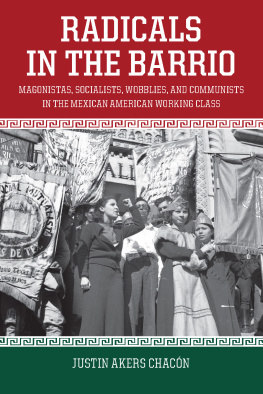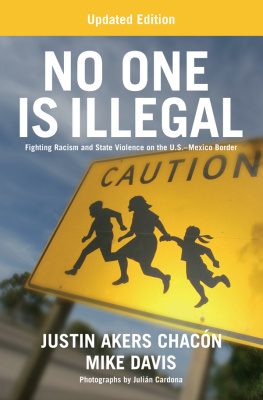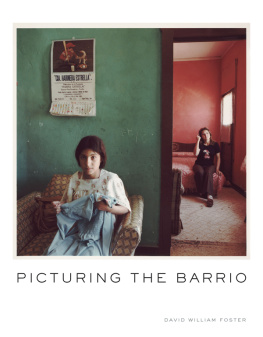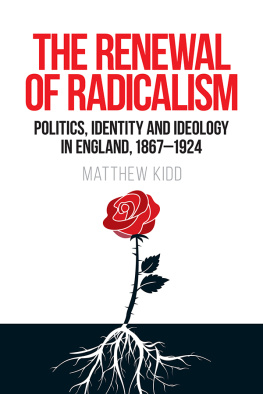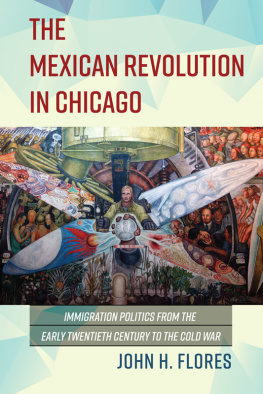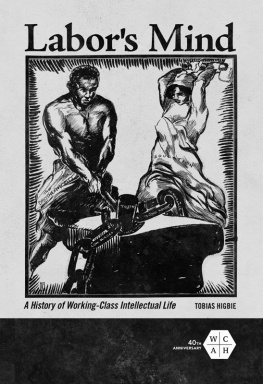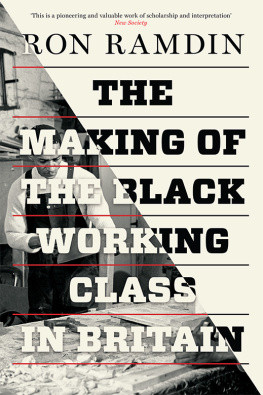Praise for Radicals in the Barrio
Hundreds of books about the history and contemporary experiences of Mexican Americans in the United States have been published since the 1960s. Until now, however, a book on the role of the Mexican American working class in the development of the US Left has remained largely missing. Radicals in the Barrio is a remarkable book that fills the gap. In particular, the author has done an excellent job documenting the role of Mexican men and women on both sides of the USMexico border who played a significant role in Left organizations beginning with the Industrial Workers of the World (IWW) in the early 1900s to the Socialist and Communist parties, unions, and other Left organizations up to the 1950s. The author also details the reasons for both the emergence of those organizations and their decline. In short, the book is a valuable contribution on the lessons of the past that can be useful for the emergence of new Left organizations in the twenty-first century.
Dr. Carlos Muoz, Jr., author of Youth, Identity, Power
Justin Akers Chacns Radicals in the Barrio is a broad, transnational history of the working men and women of greater Mexico. This well-documented book offers a gripping narrative of more than half a century of radical ideologies and organizing among Mexican Americans, ranging from anarchist traditions that predated Mexicos 1910 revolution to Cold War struggles among farm, mine, and other workers across a broad borderland. Two essential takeaways of this excellent book are that US immigration policies and racism structured the economic exploitation of Mexican Americans, and that their transnational labor and struggles were essential to the making of both nations.
John Lear, author of Picturing the Proletariat
Radicals in the Barrio is truly an impressive book. Justin Akers Chacns study is the rigorous recording of a historical process that propelled social development in the United States and Mexico. The transformation of these countries is analyzed from the social struggles undertaken by men and women located at the very base of American and Mexican societies. To understand the dimension of this research, which covers a wide period until the 1950s, it is sufficient to traverse the bibliography used. It is exhaustive, supported by impressive documentation that includes archival sources, periodicals, testimonials, and iconography that allow Akers Chacn a critical perspective and an undeniable contribution to social history. It is therefore advisable to take a deep breath and carefully and attentively read this exceptional book, and be prepared to better understand our past and our present.
Javier Torres Pars, professor of history at the Universidad Autnoma de Mxico and author of La revolucin sin frontera
Justin Akers Chacns Radicals In the Barrio gives the most comprehensive account we have of the making of the Mexican working class in the United States. From its origins in the transnational experience of extractive and industrial labor in both Mexico and the United States, through the period of the Mexican Revolution and the intense class warfare of the US West in the 1910s, to the organization of agricultural and industrial workers in the 1930s, and through the McCarthy period and the civil rights movement, Akers Chacn focuses on the political experience of Mexican workers. He does all of this within a Marxist framework, and with particular attention to the role of women workers. A formidable book in every way, it will be of interest to labor activists, Latino communities, and scholars. I highly recommend it.
Dan La Botz, author of What Went Wrong? The Nicaraguan Revolution
It is impossible to overestimate the importance of Mexican workers in the US working class, yet their story is little known outside academia. Justin Akers Chacn has set out to change this, with a thorough, detailed, and well-told recounting of their history. What a history it isminers fighting a US boss and starting the Mexican Revolution, taking on the Rockefellers in Colorados coal wars, providing the backbone for Communist- and Socialist-led strikes in the California fields, or organizing the unemployed and homeless to build a base for the historic pecan strike in San Antonio.
Akers Chacn pays attention to the radical ideology that drove the social struggles of Mexican people in the United States, not just their actions and tactics. He profiles the activists who developed that ideology, from Texas Communist strike leader Emma Tenayuca and The Mexican Question to Bert Corona, father of the modern immigrant rights movement, and to Luisa Moreno who led the CIO in California in its most radical years. Their desire to change society fundamentally is a contribution that still resounds among workers and in unions today.
Akers Chacn shows that linking working-class struggles in the United States and Mexico isnt just a product of NAFTA, or the recent decades of deportations. Emma Tenayuca went to the Workers University organized by labor leaders in Mexico City. Radicals in the Workers Alliance fought deportations throughout the Southwest eighty years ago.
Its not just that this history belongs to working people today. Akers Chacn describes in detail the importance Mexican workers gave to left-wing politics and organizing. This is rich material for understanding their value to winning the same fights today. Akers Chacns book is at the same time exciting history and a resource with real meaning for Trump-era struggles for social justice.
David Bacon, author of Illegal People and The Right to Stay Home
This eBook is licensed to Will Yang, williamyang1997@hotmail.com on 09/21/2019
Chapter 1
The Mexican Working Classes
[T]he Mexican peon prefers to rebel rather than to work... This condition will make the task of the pacification of Mexico a difficult one, either for the Mexican chief who finally obtains power, or for this country in case we are obliged to intervene.
US newspaper editorial, 1913
H istorian Rodney Anderson has argued that Mexican working-class politics were influenced more by the liberal political traditions of the native bourgeoisie than by what he refers to as militantly, class-conscious European ideologies. Only during the Mexican Revolution of 1910, he implies, did workers rally behind these doctrines as the national bourgeoisie closed ranks against radical land and labor reform. While it is may seem intuitive to say that workers only consciously embraced revolutionary doctrine while participating in the revolution, this argument overlooks the dynamics of class struggle and the history of radicalism before the Mexican Revolution.
The incorporation of Mexico into the US sphere of imperial influence and the dislocations and despoliation that followed informed labor radicalization that transcended the framework of liberal, democratic capitalism. Furthermore, this argument misunderstands how revolutionary organizations influenced by anarchist and Marxist doctrine crystallized consciousness among the most militant workers in the years preceding the revolution, especially in those strategic sectors of the economy dominated by foreign capital.
As John Mason Hart explains, the tendency to ignore, dismiss, or underestimate the role of the working classes in the Mexican Revolution is the continuation of a traditional-conservative historiography and fictional literature which denied a radical working-class tradition, revolutionary working-class consciousness or even a comprehension by workers of contemporary revolutionary events. In fact, radical political movements rooted in anticapitalist ideologies began to germinate in the interstices of class struggle in the second half of the nineteenth century.
Due to the particular characteristics of Mexico, radical philosophies first entered into the country through European and continental American immigrants, which resonated with the local traditions of collective indigenous resistance. The two major radical schools of thought, anarchism and Marxism, entered and took root in Mexico, adapting, mixing, and informing the organization of the working classes. As Anna Ribera Carb observes, even though their recently created organizations lacked defined objectives, the Mexican working class embraced syndicalist, socialist, and anarchist doctrine. These organizational expressions gestated during the Porfiriato and flowered through the period of the revolution.
Next page
